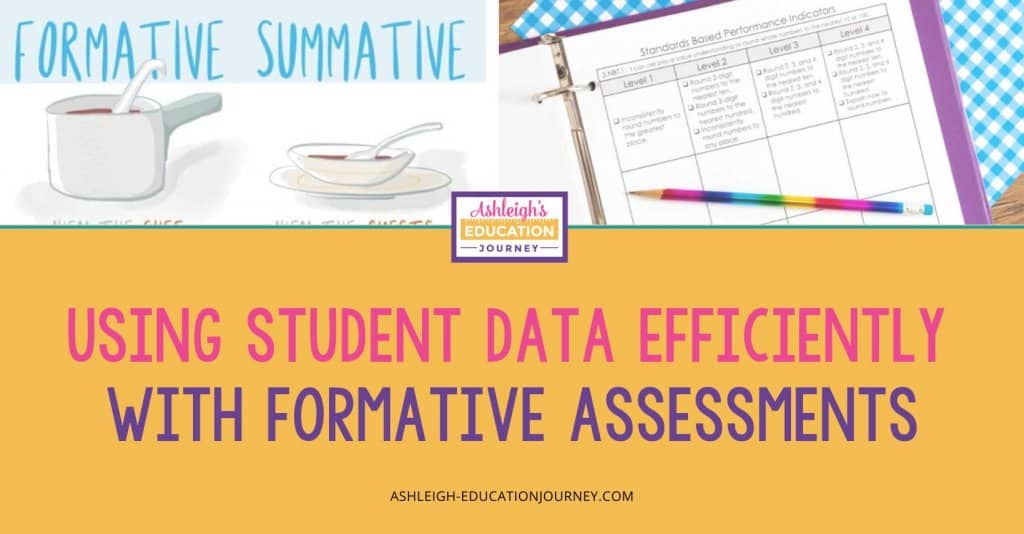
Over the years, formative assessments have become a larger and larger part of my classroom instruction. These are the assessments I use as part of my instructional process, such as written responses, graphic organizers, exit slips, discussions, quick checks, etc. I use these assessments to form math and reading groups and to guide my lesson plans to base them around my students’ needs. I certainly use many more formative assessments than summative assessments, which are the assessments I give at the end of a unit where students should be ready to show mastery of the standard.
I absolutely love this graphic from Bryan M. Mathers on the difference between formative and summative assessments. I would have never thought to look at it that way!
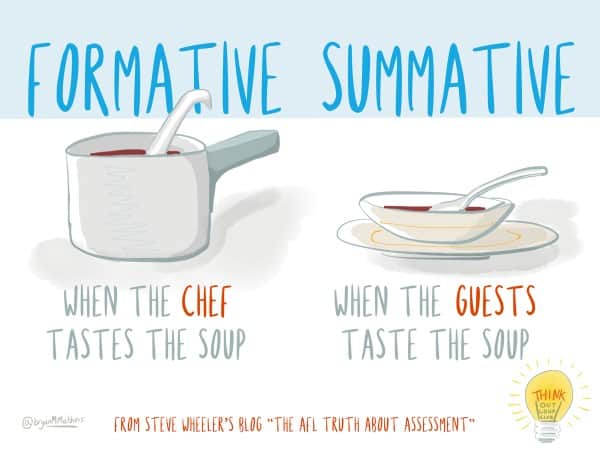
However, while the value of formative assessments has been a high priority for me, the actual management of the data gained from those assessments has been quite a struggle. I have tried every organizational system under the sun and until this year, I still didn’t feel efficient. I’ve used standards checklists, individual student graphs, all kinds of gimmicky (yet totally cool) products from teacher stores, and of course hoards of sticky notes.
As my school district began its transition from traditional grading to standards based grading, my formative assessments became even more important. We no longer use a percent grading scale and now score students on a 1-4 scale, with a level 3 meeting the standards. One of my greatest challenges has been what constitutes the difference between levels. I’m a concrete person and need to see exact criteria for each standard, so that I can be confident that my scores are accurate and reliable. To give myself a scoring guide, I created a rubric for performance indicators for every standard.
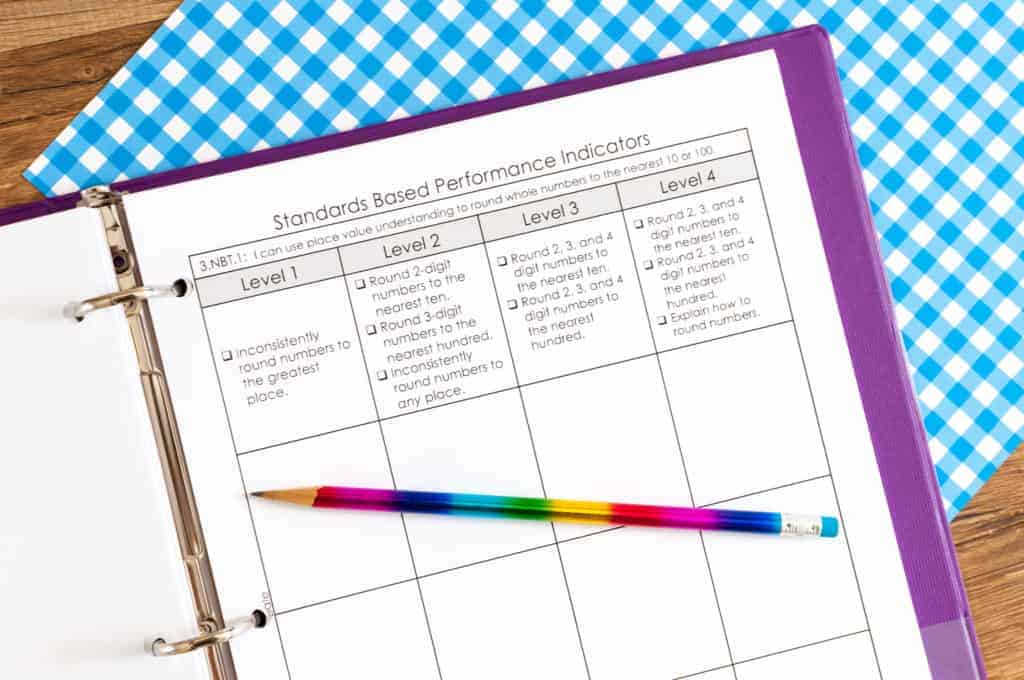
I created these rubrics for use in my own third grade classroom (last year), and there is one rubric for every Common Core Math Standard. Each rubric is specific to each standard, and the rubrics are created so that they can be used with multiple assessments over a period of time, rather than one particular assessment. The rubrics are broken into four different levels:
Level 1-not at standard
Level 2-progressing toward the standard, can meet the standard with help
Level 3-mastery of the standard
Level 4-advanced understanding and performance of the standard
I have attached an editable file of these math rubrics that you can download below! I’m working on the fourth grade rubrics as I teach this year. They aren’t ready to post, because something like this needs research and collaboration. I encourage you to edit the rubrics to meet the expectations of your school and district and to make sure they are accurately aligned to your standards. I suggest that you use these rubrics as a framework or a starting place.

I love having the rubrics available, but I’m even more excited about the system I’ve started using this year that helps me organize and manage the data provided by my formative assessments. When I give a formative assessment, I write students’ names underneath the level they scored. You can add or take away rows as needed or even just print an extra page if you need additional space. This seems so basic (especially in these blank versions with no names), but it has made using my data so much more effective. For every standard, I can immediately see who needs extra work and who has met or exceeded the standard. The versions I’m currently using look awful with names written and crossed out, arrows, divided rows, but every page gives me so much information about how my students are progressing.
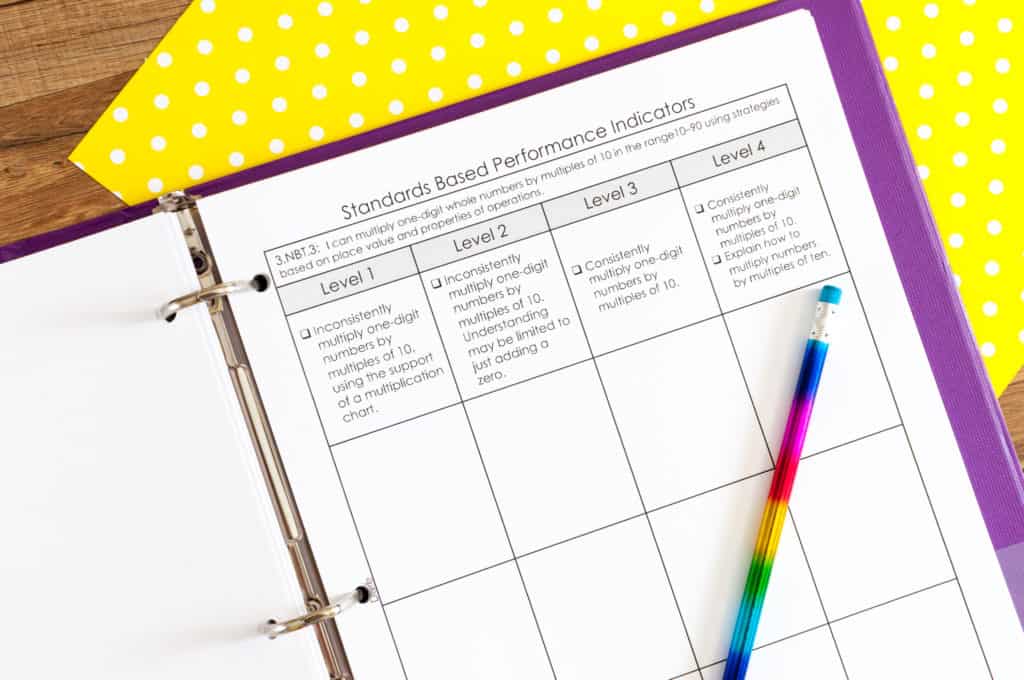
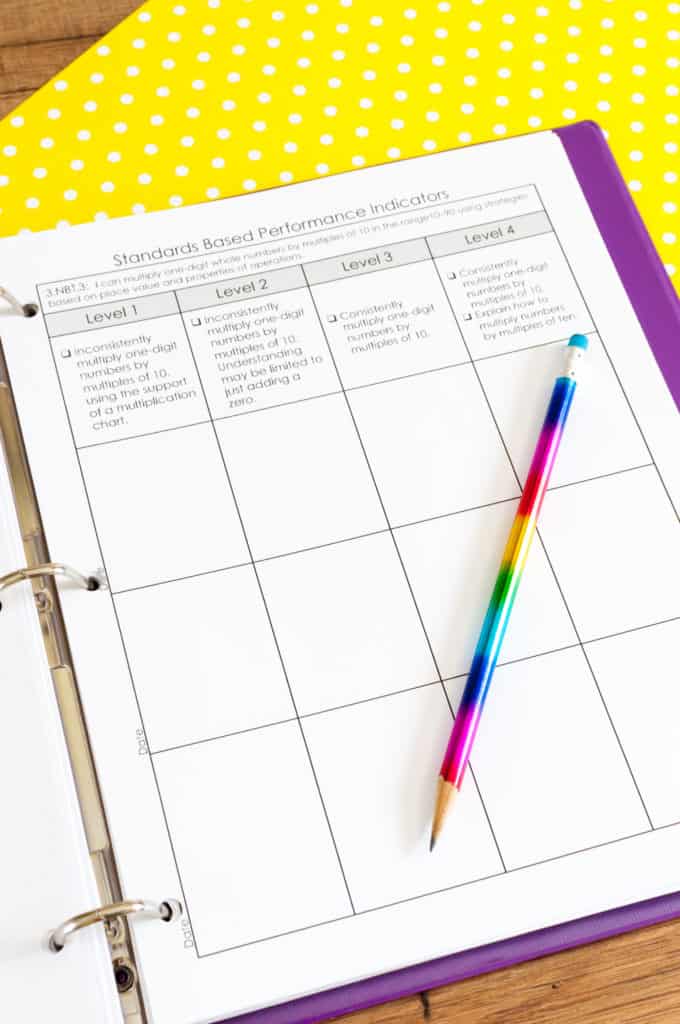
I keep everything in a binder, and refer to it almost daily. Once students show consistent mastery of a standard, and I’m only working with a small group, I only keep data for those students. I use the extra time and space for notes and any useful information.
Thank you!

Do you mind sharing a picture of how you actually use these (in action)? Thanks!
I’m looking forward to the fourth grade rubrics when you have them!
Do you have this for 3rd grade Reading?
Will you let us know when you have the 4th grade ones completed? So excited about this!
I’d love to see one of these rubrics in action! Do you have any photos of one filled out?
I have them, but I can’t post them, because they have my actual students’ information on it.
I was able to download the rubrics – however they are missing the critical information – the criteria for proficiency, which is what makes them useful. Do you have a copy available with your criteria in it for download?
Which grade level do you need?
Ashleigh,
I would like the 1st grade criteria, if that is possible!
Your stuff is awesome!
3rd Grade. Thank you.
I would love the 2nd grade criteria please! Thanks!
We are starting this initiative at our school this year. I would love to have any grade levels that you are willing to share, but specifically 2nd grade. Thanks so much!
Hi Ashleigh-
I LOVE all this organization goodness! Thank you for the freebie, Would I be able to get a copy of what you use for the 3rd grade criteria?
Thank you!
J
I would like the 2nd grade criteria please! Thanks so much! This is the direction we are moving this year as well and this will be so helpful.
So glad I found your article on formative data! I would love to have the 3rd grade criteria please. It would be so helpful.
Thank you